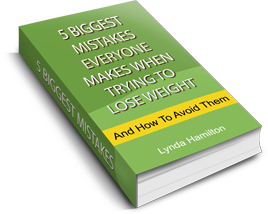Food at Work – Getting The Balance Right
Some techniques to help you get the balance right with food at work, from Sydney dietitian Lynda Hamilton.
We spend a great part of our day at work so understanding common food challenges in this environment is important in order to work out ways to avoid them.
This in itself involves self-analysis too. Habits cannot be broken unless we are aware of why and when we do things, and become familiar with the triggers that lead us to binge, snack on sugary treats or sabotage a healthy diet.
For instance, do you wander to the kitchen looking for food because you are bored of the task you have to do? Do you feel like a sugary snack at the 3pm lull because you did not eat enough protein and salad at lunchtime? Are you unhappy at work and use food to comfort yourself, or as a reward to help you get through the day?
Taking the time to question our motivations, emotions and gauge our hunger satiety before eating is the only way to really break those habits which surface in the work environment and are detrimental to our health and diet. So here are some techniques to help get the balance right with food in the work place.
Food At Work – Getting the Balance Right
1. Keep treats such as chocolates and biscuits out of sight. If your colleagues bring them back after lunch to share and leave them at the end of the desks, ask if the treats can be kept in the kitchen so you don’t have to look at them all afternoon. You could also start the precedent of bringing back healthy treats instead such as fresh fruit, nuts and dried fruit, or veg sticks and dip.
2. Keep healthy snacks such as fruit, small servings of nuts or veggie sticks with hummus or dip in the office drawer or fridge so that you have a healthy alternative at hand.
3. It’s fine to indulge in an office celebration such as a birthday cake, as long as its not all the time. Try having a smaller piece or sharing the muffin with somebody else.
4. Try not to eat out for lunch more than once per week and stick to lighter choices such as salads with protein, soups and grilled options. Order extra vegetables and salad with your main, and avoid anything fried.
5. Ensure a low GI carbohydrate and a protein option for both breakfast and lunch. This will aid satiety and help regulate blood sugars. Craving sweet things mid-afternoon can signal that you haven’t had enough protein and/or vegetables/salad at lunch time.
6. Physiological cravings are often the result of a drop in blood sugars so to combat this try to have a low GI carbohydrate every 3 hours or so. A good snack option would be cheese and wholegrain crackers or a low GI nut bar or a fruit with 5 -6 nuts. Read more about Healthy Snacking As Part of a Healthy Diet in this previous post.
7. Behavioural cravings can be formed out of habit so try break it by substituting it for something else instead such as taking a stroll, getting on the telephone, filing – anything that distracts you.
8. Next time you have a craving ask yourself if its really food that you need or are you thirsty, bored or covering another emotion. Never feed a craving with what the craving really wants as this will simply strengthen it and make it worse next time. You can read more about Managing Food Cravings in this previous blog post.
9. Last but not least, brushing your teeth after lunch and chewing sugar free gum or mints can help to prevent snacking, and is a good way to curb food cravings. Try drinking water with fresh lemon or lime too for a similar effect.
By Lynda Hamilton, an Accredited Practicing Dietitian and Accredited Nutritionist BSc, BHSc (N&D) at Hamilton Dietetics
As dietitian in North Sydney Lynda Hamilton covers Mona Vale, Kogarah, Collaroy Plateau, Dee Why, the Northern Beaches, Palm Beach, Newport, Narrabeen and Avalon. Read more about Lynda and her dietitian practice in North Sydney at the Hamilton Dietetics website.
Be diet free for life and never count calories again. Join Lynda’s new program – the 10 Weeks to Freedom Anti-Diet Weight Loss Program.






 Follow Us On Twitter
Follow Us On Twitter Like Us On Facebook
Like Us On Facebook Watch Us On YouTube
Watch Us On YouTube
Leave a Reply